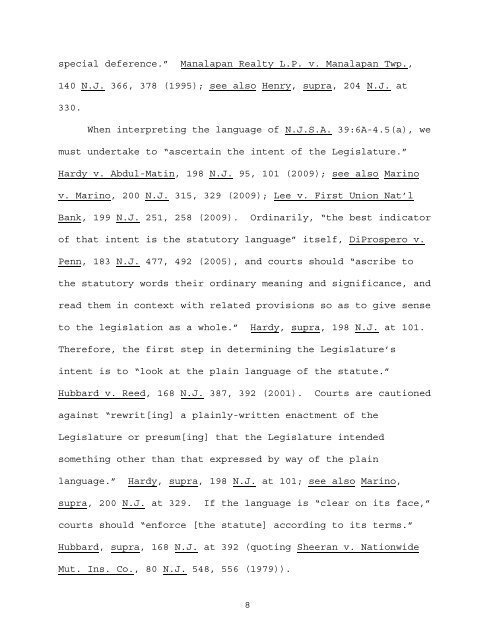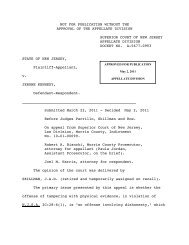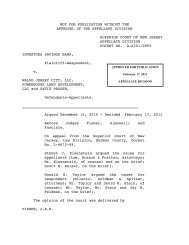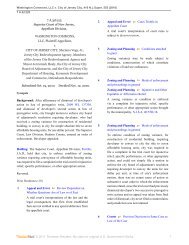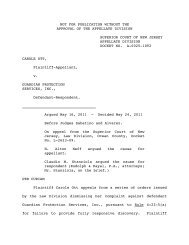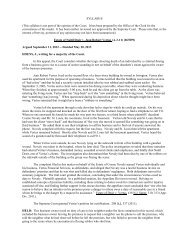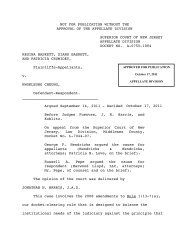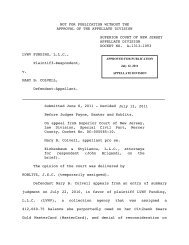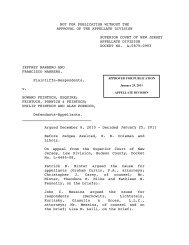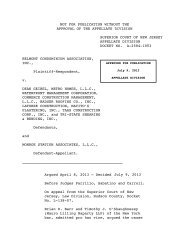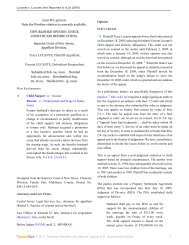Perrelli v. Pastorelle - Appellate Law NJ Blog
Perrelli v. Pastorelle - Appellate Law NJ Blog
Perrelli v. Pastorelle - Appellate Law NJ Blog
You also want an ePaper? Increase the reach of your titles
YUMPU automatically turns print PDFs into web optimized ePapers that Google loves.
special deference.” Manalapan Realty L.P. v. Manalapan Twp.,<br />
140 N.J. 366, 378 (1995); see also Henry, supra, 204 N.J. at<br />
330.<br />
When interpreting the language of N.J.S.A. 39:6A-4.5(a), we<br />
must undertake to “ascertain the intent of the Legislature.”<br />
Hardy v. Abdul-Matin, 198 N.J. 95, 101 (2009); see also Marino<br />
v. Marino, 200 N.J. 315, 329 (2009); Lee v. First Union Nat’l<br />
Bank, 199 N.J. 251, 258 (2009). Ordinarily, “the best indicator<br />
of that intent is the statutory language” itself, DiProspero v.<br />
Penn, 183 N.J. 477, 492 (2005), and courts should “ascribe to<br />
the statutory words their ordinary meaning and significance, and<br />
read them in context with related provisions so as to give sense<br />
to the legislation as a whole.” Hardy, supra, 198 N.J. at 101.<br />
Therefore, the first step in determining the Legislature’s<br />
intent is to “look at the plain language of the statute.”<br />
Hubbard v. Reed, 168 N.J. 387, 392 (2001). Courts are cautioned<br />
against “rewrit[ing] a plainly-written enactment of the<br />
Legislature or presum[ing] that the Legislature intended<br />
something other than that expressed by way of the plain<br />
language.” Hardy, supra, 198 N.J. at 101; see also Marino,<br />
supra, 200 N.J. at 329. If the language is “clear on its face,”<br />
courts should “enforce [the statute] according to its terms.”<br />
Hubbard, supra, 168 N.J. at 392 (quoting Sheeran v. Nationwide<br />
Mut. Ins. Co., 80 N.J. 548, 556 (1979)).<br />
8


